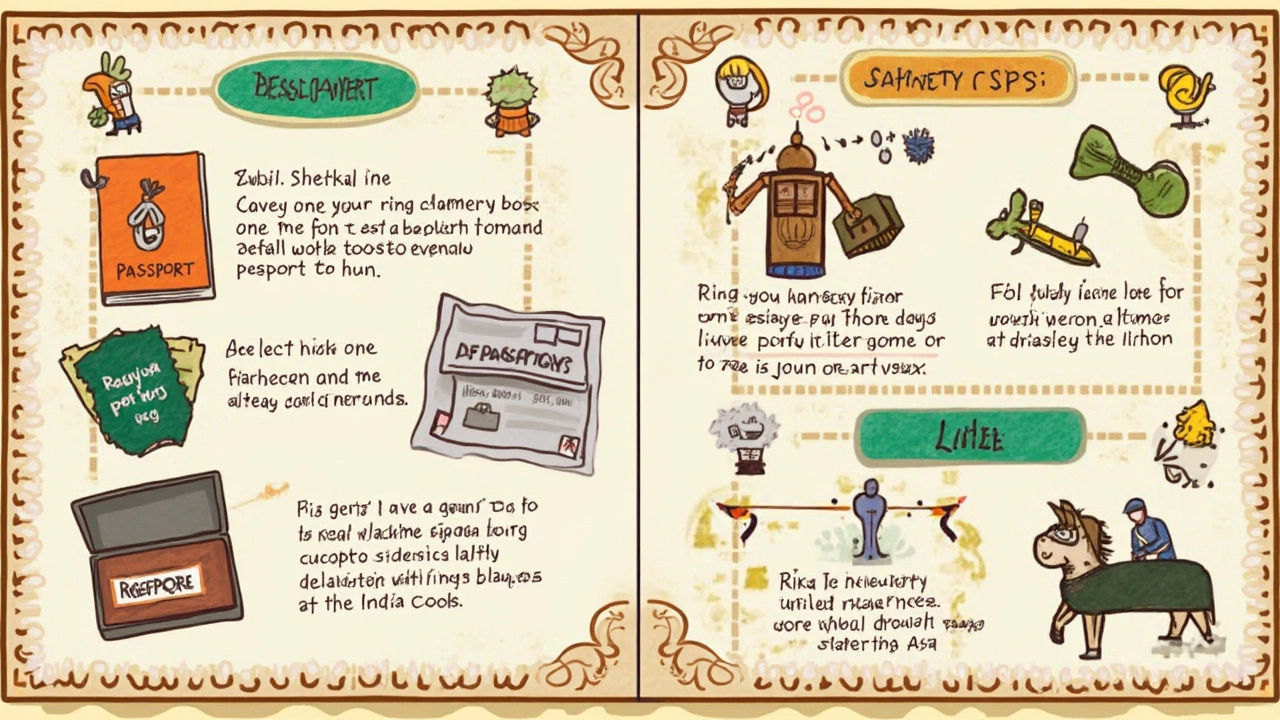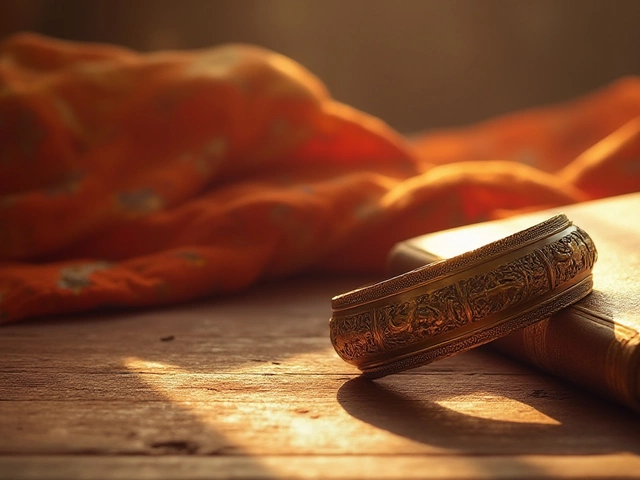
So, you're planning to fly to India with a shiny diamond ring—maybe it's an engagement surprise, a gift, or just your favorite piece you never leave behind. Sounds simple, but Indian customs rules can be a maze. Slip-ups at the airport can get awkward fast, from long questions to unwanted taxes or even confiscation. You really want to avoid turning a dream trip into a stressful one.
The good news? You can carry a diamond ring to India, but you’ve got to play by the rules. Customs officers don’t mess around when it comes to valuable jewelry. There are specific limits on what you can bring, how much it’s worth, and what you need to declare. And yes, the rules change if you’re an Indian citizen, an NRI, or a foreigner. If you try to sail past these checks without being prepared, your diamond adventure could get pricey.
Before stuffing that ring box in your bag, get to know what counts as ‘personal use’—it could save you a lot of money and trouble. Want more money-saving tips and stories of people who did (and didn’t) get it right? Hang tight—we’ll break it all down, step by step, making sure you hit Indian soil with zero drama and full peace of mind.
- Understanding Indian Customs Rules
- Personal Use vs. Commercial Intent
- Declaring Your Jewelry Properly
- Avoiding Tax Hassles and Penalties
- Travel Smart: Safety and Storage Tips
Understanding Indian Customs Rules
Indian airports don’t mess around when it comes to valuables like a diamond ring. Customs officers have clear rules for what you can bring in, how much it’s worth, and whether you need to pay duty. Here’s what you need to know before heading to the airport.
If you’re visiting India short-term (tourist or business traveler), you’re allowed to bring personal jewelry for your own use. But that means exactly what it sounds like—just a few pieces you plan to wear, not a stash of gems. If your jewelry looks like it’s for sale or gifting to lots of people, you’ll raise suspicion and risk extra scrutiny.
Bringing in a high-value ring? You’ll need to pay close attention to limits. As of 2024, male travelers can legally bring gold jewelry worth up to ₹50,000 (about $600) in value, and women up to ₹100,000 (about $1,200), without paying customs duty. These limits mostly apply to gold, but customs often use the same guidelines for diamond rings, especially if the setting is gold or platinum. Any ring above that quota may get taxed at about 36%. That bill stacks up fast if you don’t declare it properly.
Got receipts and valuations? Pack them with you. Customs sometimes ask for proof you already owned the ring before the trip—especially for NRIs or Indians coming back after a long time abroad. Without proof, they may think you bought it just to bring to India, which can also mean tax trouble.
Here are a few things that can trigger customs officers:
- Bringing multiple high-value rings or other expensive jewelry
- Having no receipts or paperwork for valuable items
- Packaging that looks brand new or gift-wrapped
- Trying to hide jewelry or not declaring it
Long story short—know the value, keep paperwork handy, and be honest with the customs officer if they ask. Doing this cuts the drama and keeps your trip running smooth.
Personal Use vs. Commercial Intent
This bit can get confusing, but it’s crucial for anyone planning to bring a diamond ring into India. Customs officers look for clues—are you wearing that ring for yourself, or bringing in a stash to sell? That difference decides the rules you’ll face.
If the diamond ring is for your own use—say, you’re wearing it or it’s in your luggage for personal wearing—customs usually sees this as ‘personal jewelry’. Indian citizens and visitors are allowed to bring in jewelry as personal effects, but there are set limits. For example, an Indian woman can bring up to 40 grams of gold (not valuing more than Rs. 100,000), and a man can bring up to 20 grams (capped at Rs. 50,000) without paying duty. Diamonds and other gemstones are trickier. There’s no fixed weight, but officers want to be sure you’re not bringing in items for resale.
The moment it looks like you’re traveling with a bunch of rings, or sealed, unworn pieces—especially if they’re new or in commercial packaging—customs might decide you’re acting as an importer. That means you’re expected to declare everything, deal with paperwork, pay import duties, and possibly show purchase receipts.
- Keep your ring on your hand or in a clearly personal jewelry case, not in a bunch of boxes or bags.
- If possible, travel with proof that the ring is yours—like an insurance appraisal or purchase receipt.
- If you’re carrying several rings or multiple pieces, expect questions and be prepared to explain.
Trying to sneak through with valuables for business or resale? You’re risking heavy fines, duty charges, or even seizure of the goods. Indian customs aren’t shy about enforcement. Play it safe: stick to what you’d genuinely use, and keep documents handy if you need to show proof.

Declaring Your Jewelry Properly
The quickest way to mess up at Indian customs? Fumbling the declaration for that precious diamond ring. Here’s the real deal: if you’re carrying jewelry worth more than INR 50,000 (for men) or INR 100,000 (for women), you’re legally required to declare it at customs. This rule is for travelers coming to India, whether you’re a citizen or a visitor. Play it safe and go by the book—trying to hide any jewelry can lead to fines, taxes, or even seizure of your ring.
As soon as you arrive, look out for the red and green channels at customs. Green means nothing to declare. If your bling crosses the stated value limits, head for the red. You’ll need to fill out a declaration form, and the customs officer may ask for proof of purchase or valuation. Original receipts or professional valuation certificates make things much smoother.
Here’s what you should keep handy for a stress-free process:
- Original receipt or invoice for the ring (or a recent valuation certificate)
- A clear photo of the diamond ring (just in case you need to describe it)
- Your passport and boarding pass (basics, but don’t forget them step)
- Customs declaration form (usually given on the flight or available at the airport)
If you go over the limit, Indian customs will calculate duty on your jewelry. Duty rates can change, but as of April 2024, the customs duty on bringing gold and diamond jewelry into India is about 38.5%. That number sounds scary, but declaration keeps you in the clear legally—and lets you avoid much nastier penalties.
| Traveler | Duty-Free Jewelry Value Limit | Documentation Needed |
|---|---|---|
| Indian Male | INR 50,000 | Invoice/Valuation, Declaration |
| Indian Female | INR 100,000 | Invoice/Valuation, Declaration |
| Foreign National | Reasonable value for personal use | Invoice/Valuation, Declaration |
If your ring stays within the allowed limit, declare it anyway if you’re unsure. The process usually takes a few extra minutes but gives you massive peace of mind. Customs officers have seen every trick in the book—better to be upfront than try your luck. Being honest pays off when it comes to carrying jewelry and traveling in and out of India.
Avoiding Tax Hassles and Penalties
Alright, here’s where stuff gets real with the Indian customs guys. If you bring in a diamond ring to India, they’re on the lookout—especially if it’s worth a good chunk of change. Customs has some numbers you really need to know before you step off the plane.
For Indian citizens returning after at least a year abroad, you can bring in jewelry worth up to Rs. 50,000 if you’re a man, and Rs. 100,000 if you’re a woman—duty free. Fly in as a tourist? Those numbers do not apply. Go over these limits or if customs thinks you’re carrying it for business, you’ll have to pay duty.
| Who | Duty-Free Limit | Duty on Exceeding |
|---|---|---|
| Indian Men (returning from abroad) | Up to Rs. 50,000 | ~38.5% on excess |
| Indian Women (returning from abroad) | Up to Rs. 100,000 | ~38.5% on excess |
| Tourists/Foreigners | N/A | ~38.5% on entire value |
The catch? If customs finds you didn’t declare a ring that’s over the limit, they can slap on big fines. The penalty can go up to six times the duty amount. Sometimes, they even seize the ring until the mess is sorted out. Big ouch.
Here’s a true pro tip: always keep original receipts or appraisals ready. Customs folks want proof of value. Digital photos of these docs on your phone work too, but the clearer, the better.
- Declare your ring if it’s worth more than the free allowance.
- Fill out the customs declaration form honestly. Don’t mess around—smuggling or false info can get you in real trouble.
- If you already own the ring and wore it in from India, carry proof—maybe an export certificate from your last trip out.
This quote from a retired Indian Customs official sums it up:
“Many travelers get into trouble because they assume small items like rings won’t attract attention. But if the value is high, not declaring can become a costly mistake.”
Not in the mood to pay big money at the airport or risk losing your bling? Know these numbers, get your paperwork in order, and stay honest with customs. It’ll save you headaches and cash—both things you’d rather spend on memories, not penalties.

Travel Smart: Safety and Storage Tips
Alright, so you’re about to carry a diamond ring to India. That’s a big deal—diamonds aren’t just valuable, they’re also a magnet for both customs eyes and sticky fingers. Here’s how to play it safe, smart, and hassle-free every step of the way.
First up, avoid putting your ring in checked luggage. It’s way too risky. Luggage can get lost, delayed, or tampered with. You should always pack your ring in your carry-on or, even better, keep it on your finger if you’re comfortable. If you do pack it, use a travel jewelry case with compartments—the cheap plastic boxes from the airport kiosks are not going to cut it for diamonds.
Need some peace of mind? Invest in insurance for your ring before you travel. A lot of people assume their regular home insurance covers valuables worldwide, but about 70% of regular policies won’t reimburse you for lost or stolen jewelry while abroad. Check if you need a special policy or a rider that covers international travel.
When it comes to hotel rooms, don’t just toss your ring in the room safe. Travel experts say that in big cities like Delhi and Mumbai, those little safes are easily hacked or sometimes even have universal codes. Try to wear the ring as much as possible, or—if you’re swimming or working out—use a portable lockbox with a cable that you can secure to a sturdy fixture.
Here’s a cheat-sheet table for quick do’s and don’ts:
| What To Do | What To Avoid |
|---|---|
| Carry the ring in your hand luggage | Checked baggage for jewelry |
| Buy travel insurance that covers jewelry | Assuming home insurance is enough |
| Use a real jewelry case or lockbox | Cheap plastic boxes or leaving it loose |
| Keep the ring on your person if possible | Leaving the ring in hotel drawers |
| Leave big jewelry at home if not essential | Wearing flashy jewelry in crowded areas |
Extra tip—take a clear photo of your ring before travel, including serial numbers or any paperwork. This will help in case you need to prove ownership or file a claim. And if customs stops you, having proof that it’s yours (like a purchase receipt) saves a ton of headache.
Last thing: India’s airports are busy, and petty theft is a real risk, even at security checks. Keep your ring box visible as it goes through the scanner and don’t get distracted while you wait for your tray. If you stay alert and use these safety hacks, your diamond ring will reach India just as sparkly as you planned.


